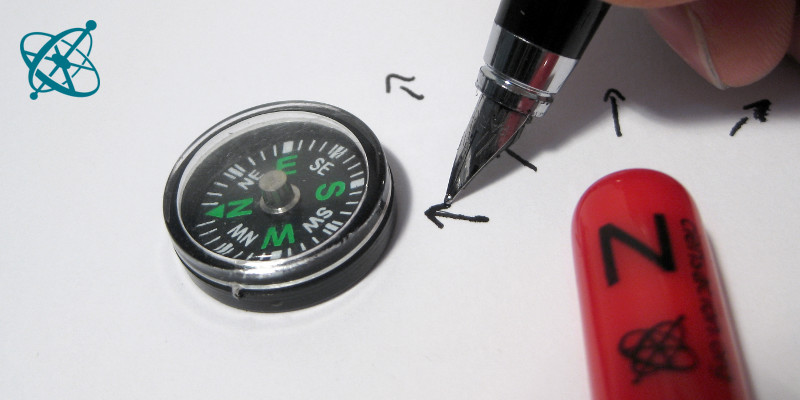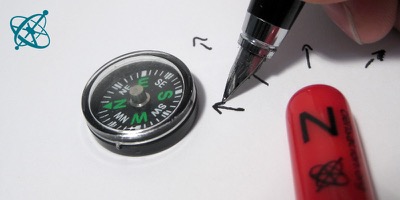 www.sciensation.org | Ciênsação hands-on experiments are published as Open Educational resources under a Creative Commons Attribution-ShareAlike 4.0 International License.
www.sciensation.org | Ciênsação hands-on experiments are published as Open Educational resources under a Creative Commons Attribution-ShareAlike 4.0 International License.
To make the magnetic field visible…

…just draw arrows in the direction the compass shows you.
Mapping the magnetic field
Iron filings produce beautiful visualizations of magnetic fields. But when your students sprinkle them on magnets, it can easily end up in a mess that takes some time to clean up. Furthermore, iron filings do not show the orientation of the field vector. Replacing the iron filings with a single compass and markings on a paper nicely resolves both problems.
The magnetic field has a direction.
Visualizing the magnetic field of a permanent magnet.
Place the magnet in the middle of a sheet of paper. Then move the compass around the magnet and draw at each location an arrow in the direction in which the north end of the needle points.
1. What do these arrows actually mean?
Does the magnetic field has a direction?
› Yes. When following the instructions, the magnetic field points from the north to the south pole (which is the direction physicists have agreed on for no particular reason).
Where do you think would the arrows point inside the magnet?
› From the south to the north pole.
If you follow the arrows, where does the magnetic field start and where does it end?
› The magnetic field has no starting point but generates closed loops.
Following the convention, all arrows point on curves from the north towards the south pole and thereby show the direction of the magnetic field. To demonstrate that the magnetic field continues inside the magnet, you can create a larger magnet by lining up two magnets and placing the compass in between them.
The compass needle itself is magnetic and aligns along the field, with its north tip pointing towards the south pole of the magnet. Please don't be confused: The north tip points to the Earth's northern hemisphere because what we call the Earth's 'North' pole is in fact a magnetic south pole.

